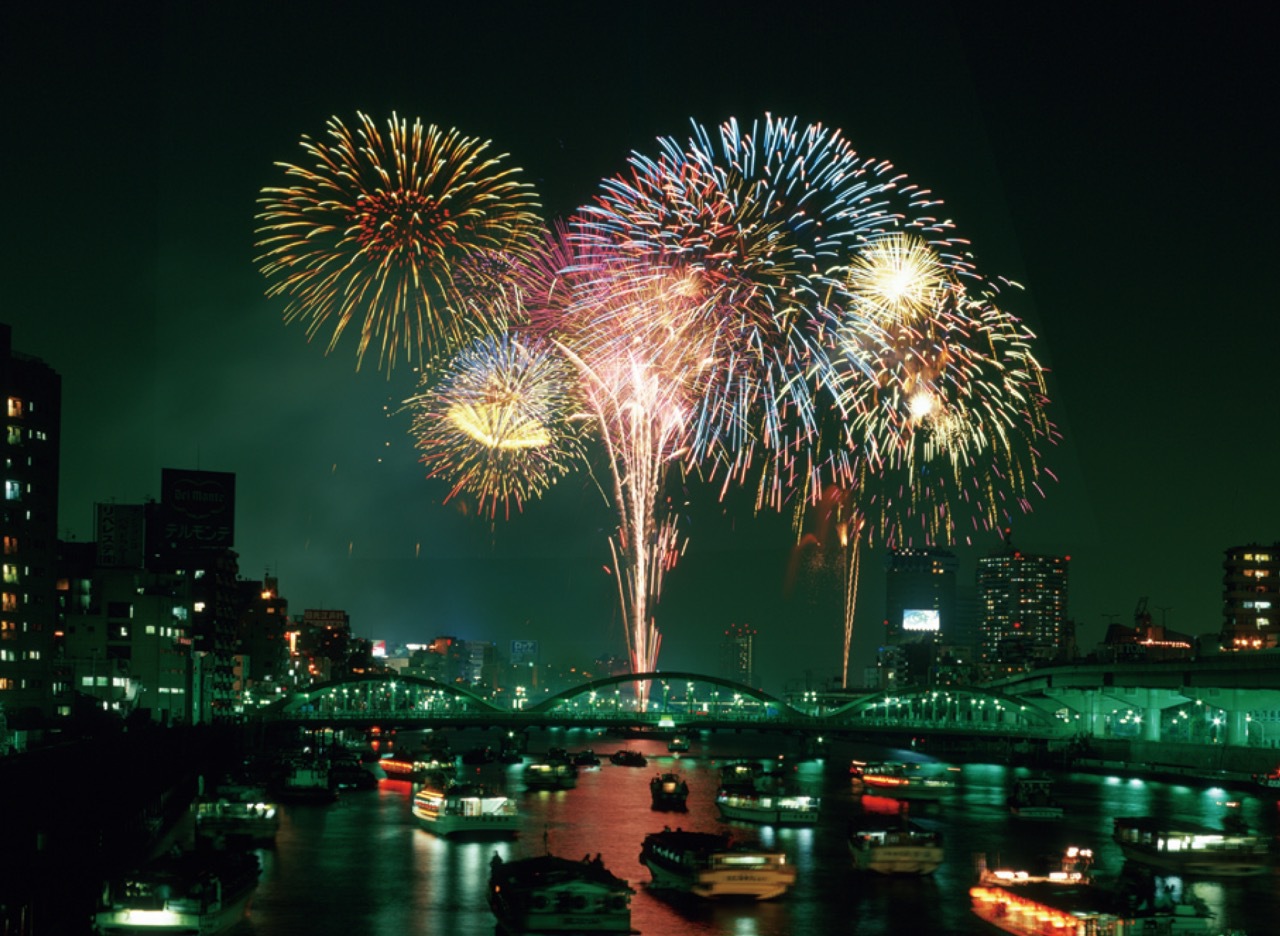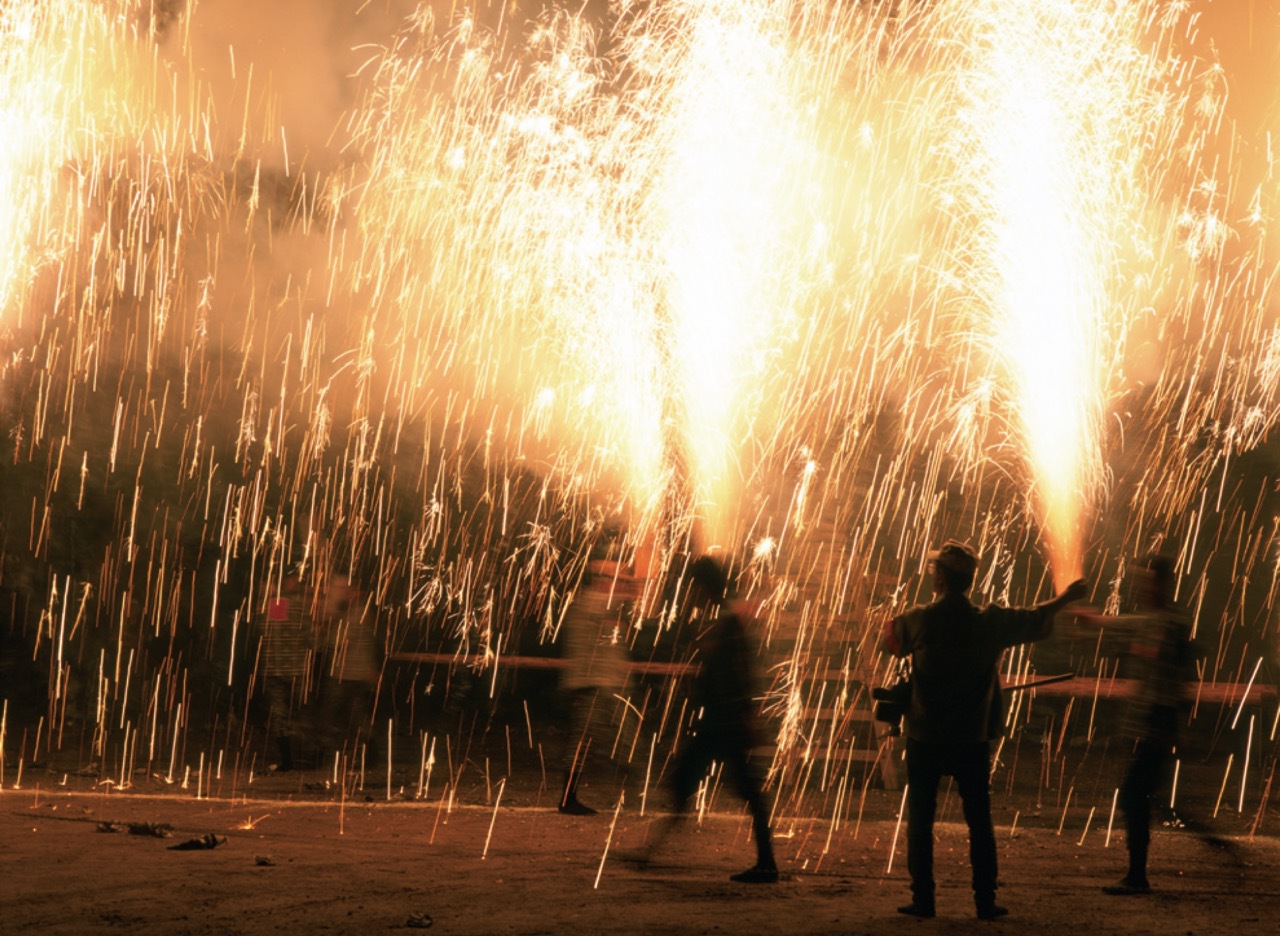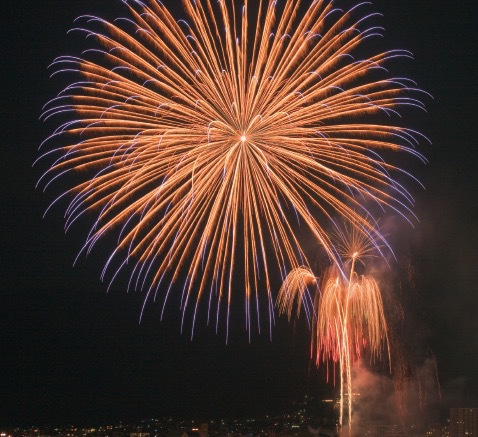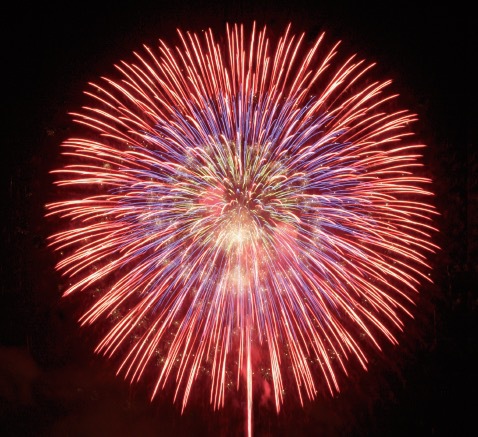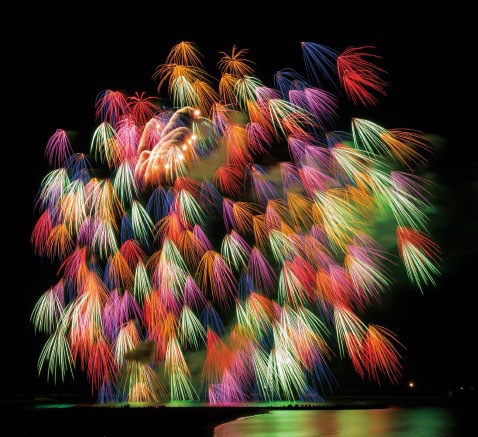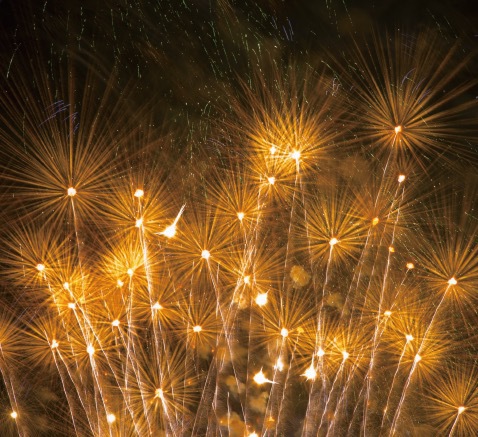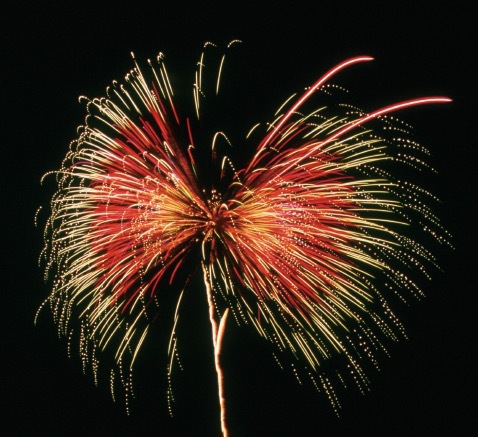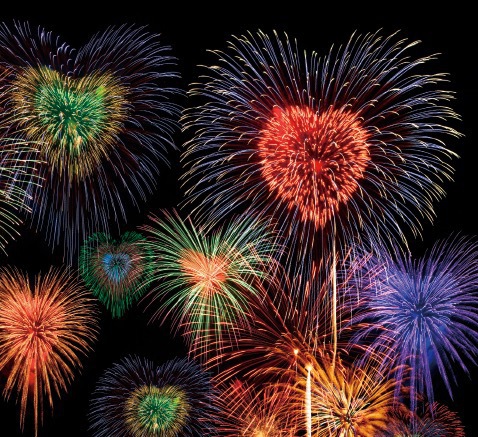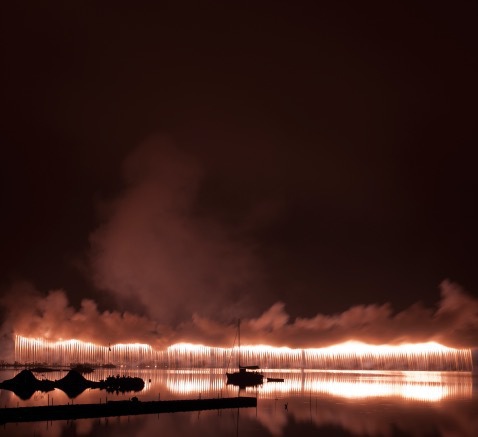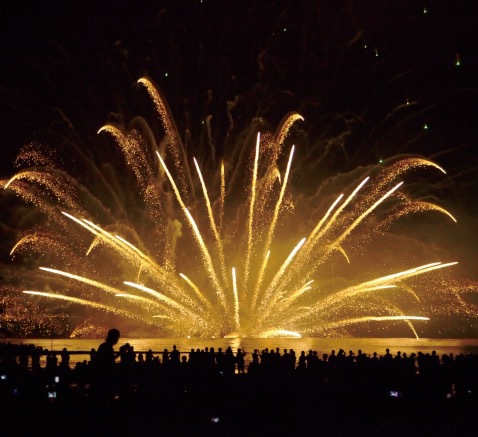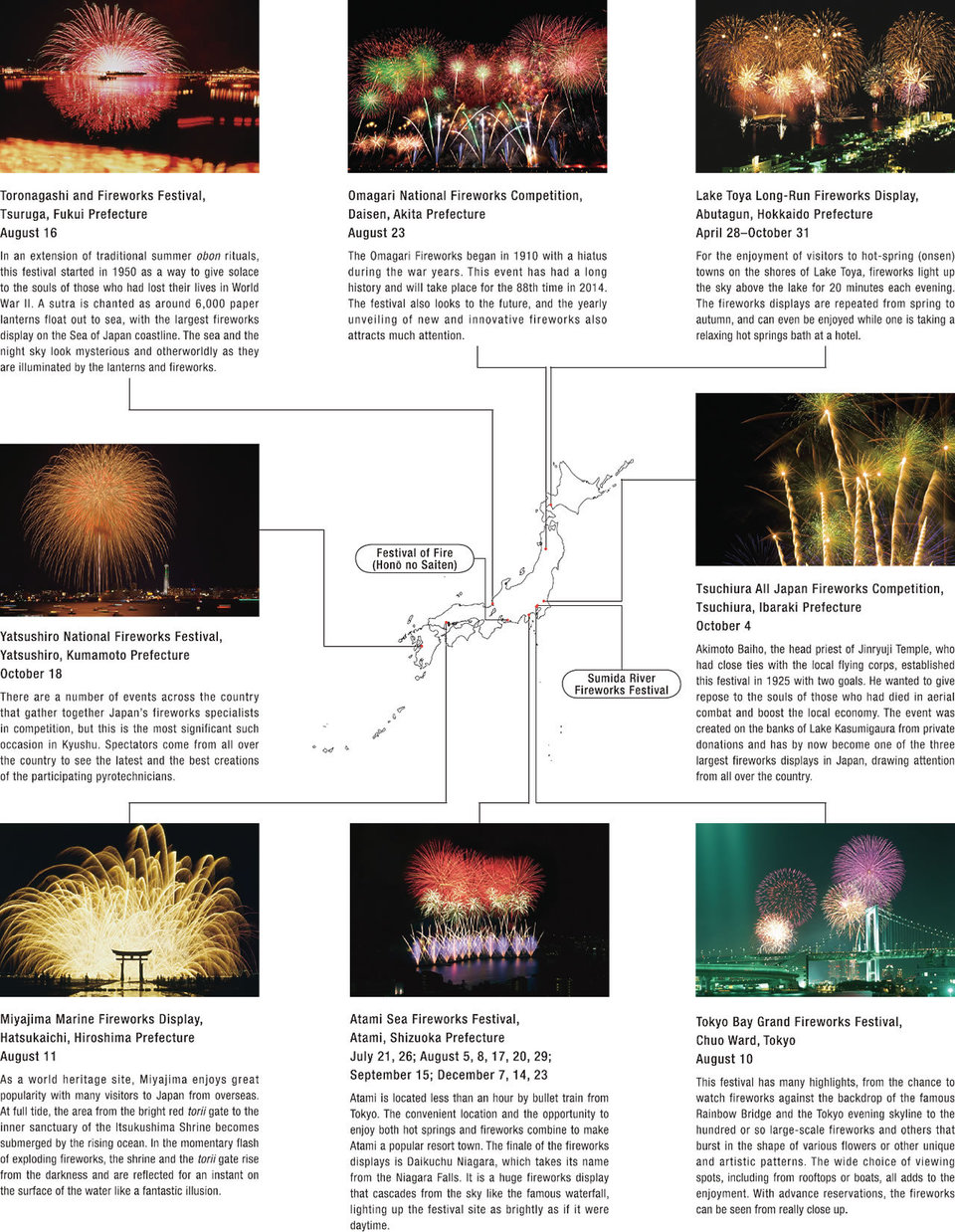Japan has four distinct seasons, and the pride of each one is the wide variety of flowers (hana) that bloom at the respective times of year. The Japanese love these seasons and especially the changes from one season into another, and they take great pleasure not only in the flowers themselves, but also the beautiful depiction of the flowers in many of the arts and crafts. To the Japanese, even fireworks appear to them as beautiful flowers and the word for fireworks in Japanese, hanabi means “flowers of fire.”
The Japanese know that summer has truly arrived when they see a succession of “fire-flowers” open their petals in the night sky, in a similar way to their floral namesakes. If you happen to hear a distant booming sound in summer in Japan, look up to the night sky. A magnificent bouquet of fire-flowers will surely be welcoming you to the Japanese summer!
Sumida River Fireworks Festival,
Sumida & Taito Wards (Tokyo), July 26
In 1733, Tokugawa Yoshimune, the eighth shogun of the Edo Period (1603–1867), decreed that a water-god festival, suijinsai, “be held on the Sumida River every year on July 9 to mourn those who had died in famine and other disasters. Fireworks were launched at the event, and that event is now recognized as the start of the Sumida River Fireworks Festival, Japan's most famous fireworks festival, which boasts a history of almost 300 years.
In the beginning, the Kagiya guild of fireworks makers was in charge of the rockets, but in 1810, some members of the group broke away to form the Tamaya guild and the two guilds entered into competition with each other; their rivalry is widely believed to have spurred the unique development of Japanese fireworks. From 1961, due to traffic congestion and worsening pollution of the river, the festivities were discontinued for 17 years, but there was a strong desire among local residents to bring back the fireworks. In 1978 the launch site was moved upstream, and the festival was revived under its modern name, the Sumida River Fireworks Festival. The event attracts over a million spectators every year, and, as it is held on the last Saturday of July, it makes people feel right at the heart of summer!
Festival of Fire (Honō no Saiten),
Toyohashi (Aichi), September 13
At most fireworks festivals, the fireworks are launched from mortar tubes on the ground, but the fireworks at this event are very different. These fireworks are from the eastern part of Aichi Prefecture and are known as tezutsu hanabi. They are said to have originated from the beacon fires of the Sengoku period (1467–1568).
To make these fireworks, gunpowder is packed into bamboo tubes that are up to a meter in length. The tubes are then hand-held, and the fuse is lit by a man who holds the tube aloft and stands calmly as the tezutsu hanabi spouts a roaring column of fire. The sight of such bravery is tremendously impressive! The flames project up to 10 meters from the mouth of the tube, and the spectacle ends with a loud “crack” as the bamboo tube splits apart. At the Honō no Saiten festival, you can enjoy not only the impressive sight of a long row of men launching their tezutsu hanabi simultaneously, but also starmines, set-piece fireworks (shikake hanabi) and many other kinds of fireworks.
Seasonal Attraction: Fireworks
Fireworks seen in Japanese fireworks displays can be categorized into four types according to their construction: warimono, han warimono, katamono, and shikake hanabi. Warimono is a typical Japanese fireworks. When the casing breaks, the pyrotechnic pellets (stars) packed inside scatter to form a sphere. With han warimono, on the other hand, the stars packed inside the shell fall downward when the shell splits in two in the air. Katamono fireworks form letters or a variety of patterns in the night sky. There are many kind of shikake hanabi. For example, they can be constructed with the help of wooden frames and wire or launched from over the water. The crowds at fireworks festivals are always delighted by the dynamic patterns and pictures they form.
Warimono
Chrysanthemum
This typical warimono forms a round flower shaped like a chrysanthemum in the nightsky. Long plumes spread out from the center while maintaining the spherical shape in every direction.
Peony
Chrysanthemum and peony are the two most typical warimono. Stars packed inside the casing emit flames that flare straight out without leaving a trail, and the core being a distinctive feature. Usually, two or three colors are layered so that the changing shades of the core and petals can be enjoyed.
Han warimono
A Thousand Chrysanthemums
When the shell splits in the air, there is a momentary delay before variously colored chrysanthemum-shaped stars burst open in unison, filling the night sky with color. Thiskind of fireworks first appeared in the mid- Taisho era (late 1910s) in single colors.
Katamono
Butterfly
The stars in the shell are distributed in sucha way as to form the shape of a butterfly. Since it opens out in three dimensions, it looks like a butterfly from some angles, but from other angles it appears to be round fireworks opening out.
Shikake Hanabi
Waterfall
A picture of a waterfall is evoked by using wire to suspend narrow tubes packed with pyrotechnic pellets at regular intervals and igniting them all at once. Generally called Niagara, this shikake hanabi is a popular set piece at fireworks displays.































































































































